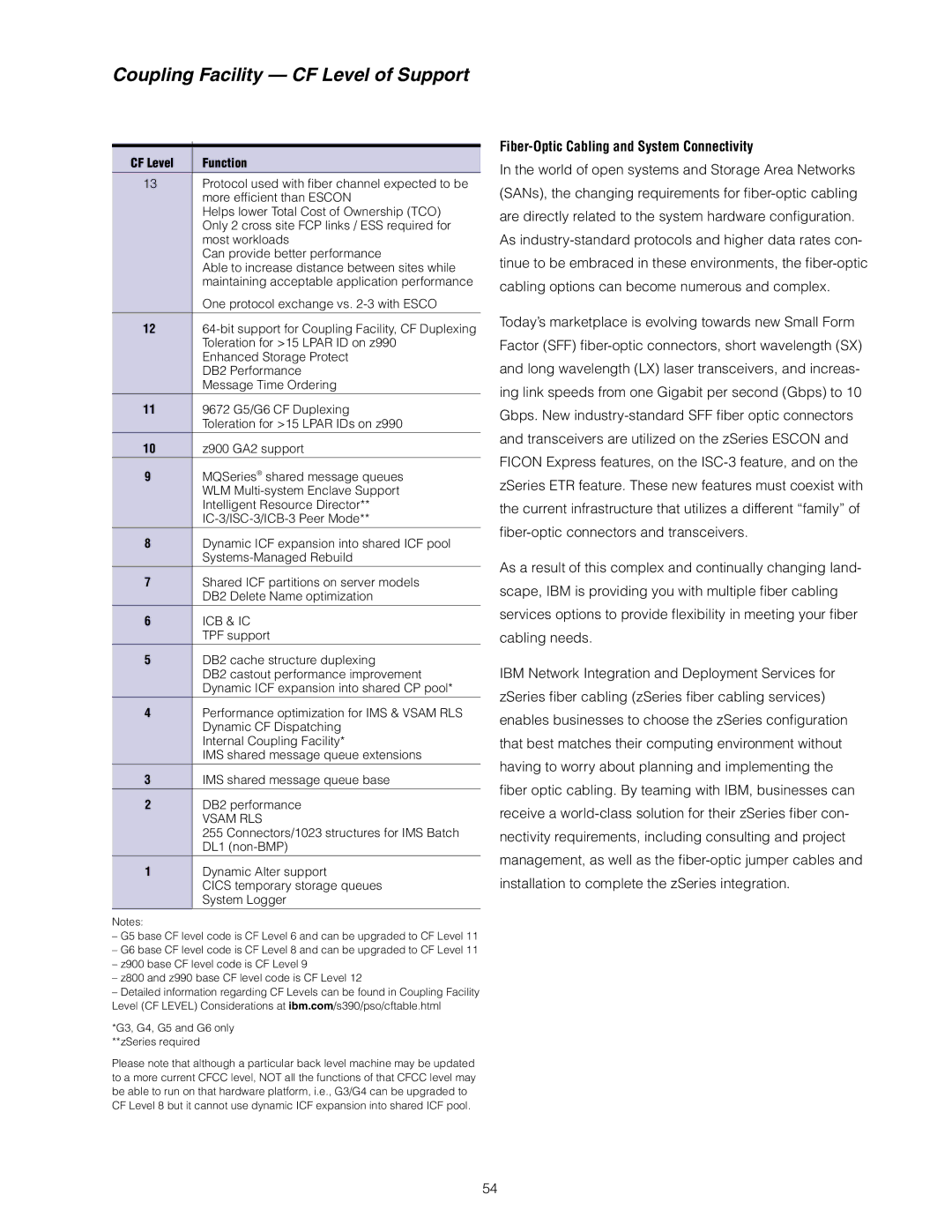
Coupling Facility — CF Level of Support
CF Level | Function |
|
|
13Protocol used with fi ber channel expected to be more effi cient than ESCON
Helps lower Total Cost of Ownership (TCO) Only 2 cross site FCP links / ESS required for most workloads
Can provide better performance
Able to increase distance between sites while maintaining acceptable application performance
One protocol exchange vs.
12
Enhanced Storage Protect DB2 Performance Message Time Ordering
119672 G5/G6 CF Duplexing Toleration for >15 LPAR IDs on z990
10z900 GA2 support
9MQSeries® shared message queues WLM
8Dynamic ICF expansion into shared ICF pool
7Shared ICF partitions on server models DB2 Delete Name optimization
6ICB & IC TPF support
5DB2 cache structure duplexing
DB2 castout performance improvement Dynamic ICF expansion into shared CP pool*
4Performance optimization for IMS & VSAM RLS Dynamic CF Dispatching
Internal Coupling Facility*
IMS shared message queue extensions
3IMS shared message queue base
2DB2 performance
VSAM RLS
255 Connectors/1023 structures for IMS Batch DL1
1Dynamic Alter support
CICS temporary storage queues System Logger
Notes:
–G5 base CF level code is CF Level 6 and can be upgraded to CF Level 11
–G6 base CF level code is CF Level 8 and can be upgraded to CF Level 11
–z900 base CF level code is CF Level 9
–z800 and z990 base CF level code is CF Level 12
–Detailed information regarding CF Levels can be found in Coupling Facility Level (CF LEVEL) Considerations at ibm.com/s390/pso/cftable.html
*G3, G4, G5 and G6 only **zSeries required
Please note that although a particular back level machine may be updated to a more current CFCC level, NOT all the functions of that CFCC level may be able to run on that hardware platform, i.e., G3/G4 can be upgraded to CF Level 8 but it cannot use dynamic ICF expansion into shared ICF pool.
Fiber-Optic Cabling and System Connectivity
In the world of open systems and Storage Area Networks (SANs), the changing requirements for fi
As
Today’s marketplace is evolving towards new Small Form Factor (SFF) fi
As a result of this complex and continually changing land- scape, IBM is providing you with multiple fi ber cabling services options to provide fl exibility in meeting your fi ber cabling needs.
IBM Network Integration and Deployment Services for zSeries fi ber cabling (zSeries fi ber cabling services) enables businesses to choose the zSeries confi guration that best matches their computing environment without having to worry about planning and implementing the
fiber optic cabling. By teaming with IBM, businesses can receive a
54
